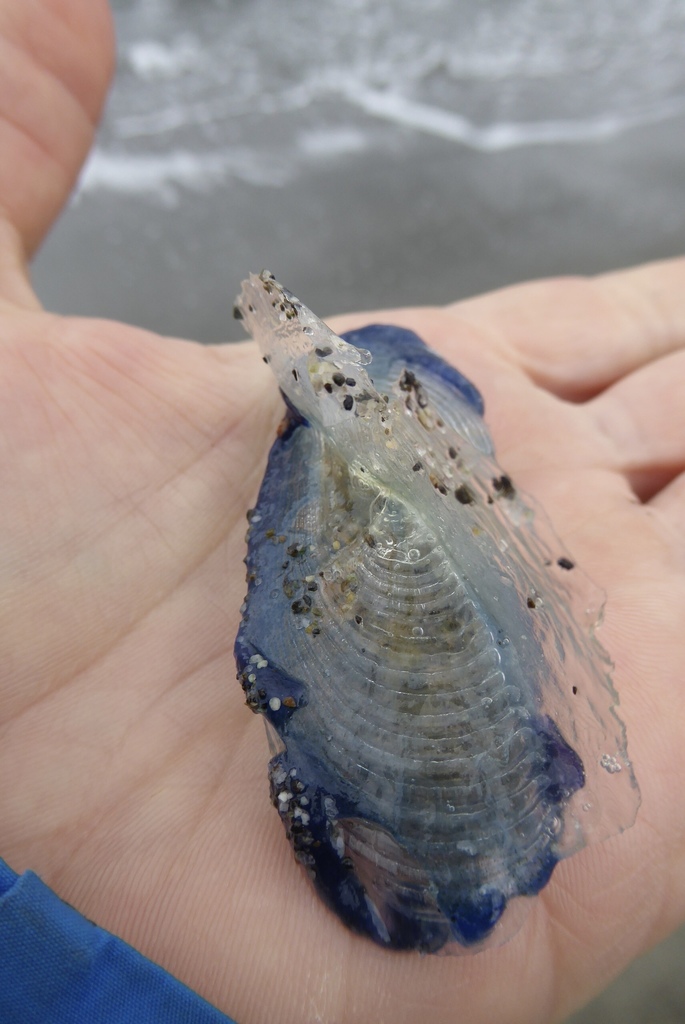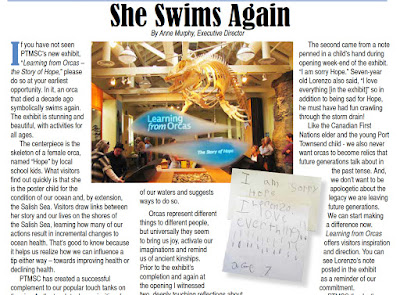 |
| Libby Palmer and Judy D'Amore at the Aquarium, circa 1983. |
Perhaps the best-known program supported by the PTMSC is the Marine Mammal Stranding Network. Created by the National Oceanic and Atmospheric Administration following the passage of the 1972 Marine Mammal Protection Act, the MMSN program is robust and boasts support from many citizen scientists.
The PTMSC-supported MMSN covers over 100 miles of Washington shoreline from Brinnon to Diamond Point. A stranded marine mammal may be dead onshore or floating in the water, alive but injured or unable to return the water, or alive but unable to return to its natural habitat without assistance. Staff and volunteers respond to stranding reports phoned in to a hotline, keeping shoreline users at a safe distance and collecting data from dead animals.
Statistics for 2017 are still being assembled but the network received 141 calls in 2016, and a record of 192 calls in 2014. (The number of calls does not match the number of strandings because multiple reports can come in for one stranded animal.) The highest volume of calls occurs during July and August. Harbor seals account for approximately 3/4 of reported strandings and, of those, 70 percent are seal pups. (In the wild, only 50 percent of harbor seal pups survive.) More information is available here.
Harbor porpoise monitoring is another citizen science program supported at the PTMSC. The second smallest porpoise in the world, harbor porpoises were once considered the most commonly spotted cetacean in Puget Sound. Their numbers dropped dramatically and by 1970 the species had all but disappeared. In 2015-16, the PTMSC teamed up with the Pacific Biodiversity Institute for an acoustic monitoring study, deploying a crew of volunteers to count the number of harbor porpoises and boats seen off of the Fort Worden pier. Spotting data is currently being correlated to acoustic data and, while final results are not yet available, preliminary findings suggest that fewer harbor porpoises are observed when motorized boat traffic is present.
 |
Harbor porpoise monitoring |
Classroom instruction and field observation are also taught in PTMSC school programs and at youth summer camps.
“Introduction to Marine Mammals” is a 90-minute program offered to youths in 4th grade and above (including adults). The class defines characteristics of marine mammals and investigates marine adaptations using photos, videos, bones, and pelts. Working in small groups, participants examine, make observations and sketch multiple marine mammal skulls.
The “Gray Whale” class, offered to the same age groups, teaches students about the biology and adaptations of gray whales. Participants learn about the gray whale’s life cycle, natural history, feeding behavior and migration route north and south along the West Coast. Students also assemble the complete skeleton of a juvenile gray whale recovered by PTMSC volunteers in 1999.
 |
| PTMSC lecture-series speaker Dave Bonnett, "The Sonic World of the Amazonian Pink Dolphin." |
Finally, while wildlife cruises to the federal Protection Island National Wildlife Refuge spotlight breeding populations of seabirds and shorebirds, it is common for participants to view elephant seals and sea lions basking on the island’s shoreline. Harbor seals also depend upon the island for a pupping and rest area. Naturalists who accompany the cruises provide expert commentary on the habits of these marine mammals and their importance on the island’s ecosystem.






























